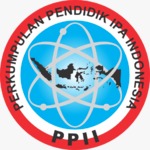Penentuan Dosis Efektif Pada Abdo Pelvis dan Organ Kritis dari Hasil Penyinaran Computed Tomography Scanner (CT Scan)
DOI:
https://doi.org/10.29408/kpj.v7i2.7676Keywords:
Dosis Efektif, DLP, CTDIvol, CT Scan, Organ Kritis, Abdo PelvisAbstract
Determination of the effective dose on the abdo pelvis and organs at risk has been carried out from the results of the CT Scan irradiation at Sanglah General Hospital.The study began by collecting secondary data from the results of an abdominal CT scan, namely the CTDIvol and DLP values. Then the data was grouped based on gender of 40 patients with an age range of 20-70 years. The value of the effective dose in the abdo pelvis is obtained by multiplying the DLP value and the conversion coefficient k. While the effective dose to organs at risk is obtained from the product of the CTDIvol and wt. The results of the effective dose in the abdo pelvis were obtained in the range of 4.596-6.738 mSv for male patients while for female patients it was 4.209-5.232 mSv. The results of the effective dose in the abdo pelvis are still at the threshold set by BAPETEN, which is 13.275 mSv, so the CT scan is still suitable for use. Average effective dose values for critical organs were 0.2882 mSv for the liver, 0.8646 mSv for the kidney, and 0.5764 mSv for the gonad. The highest dose was received by the gonads. This shows that the gonads are the organs that have the highest sensitivity in receiving radiation doses in the abdo pelvisReferences
Badan Pengawas Tenaga Nuklir (BAPETEN) No, 121/K/V, 2021, Penetapan Nilai Tingkat Panduan Diagnostik Indonesia (Indonesian Diagnostic Reference Level) untuk Modalitas Sinar-X CT Scan dan Radriografi Umum, Jakarta: BAPETEN.
Ibrahim, A.A., Bualkar, A., dan Halmar, H., 2018, Estimasi Dosis Efektif Pasien Bagian Abdomen dari Hasil Pemeriksaan CT Scan Merek Siemens SOMATOM, POSITRON, Vol, 8, No, 2 (2018), Hal, 39-42.
ICRP, 2007, Recommendations of the International Commission on Radiological Protection, ICRP Publication103, Annals of the ICRP 37 (2–4)
Kristinayanti, N.K.D., Iffah, M., Jeniyanthi, N.P.R., Astina, K.Y., 2019, Analisis Pengaruh Scan Length Terhadap Nilai Dose Lengh Product pada CT Scan Multisclice di RSUD Mangusada Badung, IMEJING Jurnal, Vol. 3. Hal. 3.
Juniarti, Ika., 2015, Analisis Dosis Efektif Radiasi Pada Pemeriksaan Thorax Pasien Tuberculosis Paru Di Instalasi Rumah Sakit Paru Jember, Skripsi, Universtitas Jember.
Nurhayati, A. Y., Nariswari, N. N., Rahayuningsih, B. dan Hariadi, Y. C., 2019, Analisis Variasi Faktor Eksposi dan Ketebalan Irisan Terhadap CTDI dan Kualitas Citra Pada Computed Tomography Scan, BERKALA SAINSTEK, 7(1), 7-12.
Nuryadi, Tutut D. A., Endang S. U., Budiartana., 2017, Dasar-Dasar Statistik Penelitian, Yogyakarta: SIBUKU MEDIA.
Rosyida, Novita, 2016, Pengukuran Laju Radiasi Ekseternal di Area Radioterapi RSUD Dr Saiful Anwar Malang, Skripsi, Universitas Brawijaya, Malang.
Satwika, L.G.P. 2020, “Pengaruh Variasi Tegangan Tabung Sinar-X terhadap Signal to Noise Ratio (SNR) dan Contrast to Noise Ratio (CNR) dengan Penerapan Anode Heel Effect Menggunakan Stepwedge”, Buletin Fisika Vol, 2021, 22,1: 20-28.
Yogantara, P.G.A.K, 2021, “Analisis Dosis Efektif pada Pemeriksaan Computer Tomography (CT) Scan di RSUD Sanjiwani Gianyar”, Buletin Fisika Vol, 2021, 22,1: 53-59.









